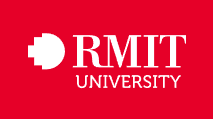A Bond Across Time and Space: The Evolution and Reshaping of the "Homeland" Concept among Filipino Chinese from 1945 to 2025
DOI:
https://doi.org/10.63313/SSH.9046Keywords:
Filipino Chinese, policy adjustment, economic integration, cultural symbiosisAbstract
This paper focuses on the evolution of the "homeland" concept among Filipino Chinese from 1945 to 2025, exploring its transformation from a one-way identification with their ancestral homeland in the early post-war period ("returning to one's roots") to a fusion of "dual homeland and dual nation" identity after the establishment of diplomatic relations between China and the Philippines. The study finds that this transformation went through three stages: arduous survival, initial integration, and full integration, gradually achieved through deep economic cultivation, political participation, and cultural inheritance and integration. This transformation was driven by multiple factors, including adjustments in Philippine policy, changes in Sino-Philippine relations, the binding of economic interests, and socio-cultural integration. It reflects both the adherence to Chinese cultural genes and the adaptation to the host country. The reshaping of the "homeland" concept among Filipino Chinese not only constructed a dual identity but also became an important bond for people-to-people exchanges between China and the Philippines, providing a typical case and theoretical reference for overseas Chinese studies and cross-cultural communication.
References
[1] Chen Liefu. History of Overseas Chinese in the Philippines [M]. Taipei: Zhengzhong Book Company, 1970.
[2] Shi Zhenmin. Studies on Chinese Society in the Philippines [M]. Hong Kong: Chinese Uni-versity of Hong Kong Press, 1985.
[3] Wang Gungwu. Studies on Overseas Chinese [M]. Nanjing: Jiangsu People's Publishing House, 2013.
[4] Zhuang Guotu. The Relationship between Overseas Chinese and China [M]. Guangzhou: Guangdong Higher Education Press, 2001.
[5] Liu Hong. Changes in Southeast Asian Chinese Society: A Case Study of the Philippines [J]. World Ethnicities, 2005(3):45-52.
[6] Li Zhigang. Identity and Cultural Adaptation of Chinese in the Philippines after the War [J]. Studies on the History of Overseas Chinese, 2008(2):31-39.
[7] Chen Zhiming. Cultural Identity of Diaspora Groups: Studies on Chinese in Southeast Asia [J]. Journal of Guangxi University for Nationalities (Philosophy and Social Sciences Edi-tion), 2004(5):102-108.
[8] Zhang Yinglong. The adjustment of policies towards Chinese people and changes in Chinese society after the establishment of diplomatic relations between China and the Philippines [J]. Contemporary Asia-Pacific, 2010(4):135-152.
[9] Li Qirong. Cultural and national identity of overseas Chinese in the context of globalization [J]. World Ethnicities, 2012(2):1-9.
[10] Huang Zisheng, Wen Beiyan. A History of Chinese People in the Philippines [M]. Guangzhou: Guangdong Higher Education Press, 1987.
[11] Wickberg, Edgar. The Chinese in Philippine Life, 1850-1898[M]. New Haven: Yale Univer-sity Press, 1965.
[12] Tan, Chee-Beng. Chinese Identity in Southeast Asia: Research Trends and Prospects[J]. Journal of Chinese Overseas, 2007(3):303-321.
[13] Co, Lucy M. The Chinese Community in the Philippines: Migration, Settlement and Identi-ty[M]. Manila: Ateneo de Manila University Press, 2003.
[14] Purcell, Victor. The Chinese in Southeast Asia[M]. London: Oxford University Press, 1951.
[15] Ang See, Teresita. Philippine Chinese: Assimilation and Identity[J]. Philippine Studies, 1992(2):156-172.
Downloads
Published
Issue
Section
License
Copyright (c) 2025 by author(s) and Erytis Publishing Limited.

This work is licensed under a Creative Commons Attribution 4.0 International License.

















